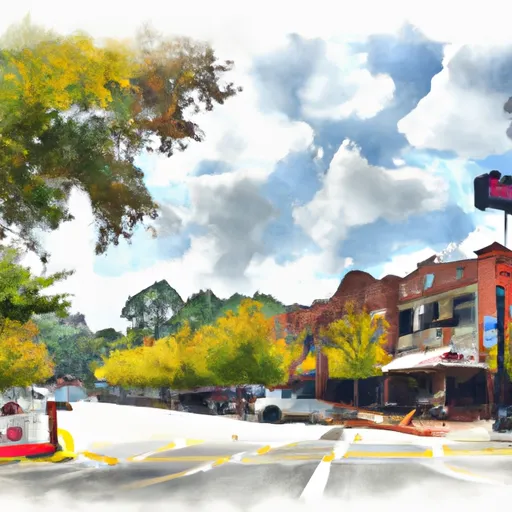-
 Snoflo Premium
Snoflo Premium
Get unlimited access to all our content
With no Ad interruptions! - Start Your Free Trial Login with existing account
Chamblee
Eden Index
Climate
7.8
•
Recreation
6.3
•
Community
4.5
•
Safeguard
6.4/10

Chamblee, Georgia has a humid subtropical climate with hot summers and mild winters. Its location in the Peachtree Creek watershed means that hydrology constituents such as sediment and nutrients can affect local water quality. However, the city has taken steps to improve water management and reduce pollution through initiatives like the Peachtree Creek Greenway. Outdoor recreation opportunities in Chamblee include trails for walking and biking, such as the Chamblee Rail Trail and Keswick Park, which offers a playground, tennis courts, and a dog park. The city also hosts community events like the Chamblee Summer Concert Series and the Chamblee Farmers Market.
What is the Eden Index?
The Snoflo Eden Index serves as a comprehensive rating system for regions, evaluating their desirability through a holistic assessment of climate health, outdoor recreation opportunities, and natural disaster risk, acknowledging the profound impact of these factors on livability and well-being.
Climate Health Indicator (CHI): 7.8
Chamblee receives approximately
1319mm of rain per year,
with humidity levels near 86%
and air temperatures averaging around
16°C.
Chamblee has a plant hardyness factor of
7, meaning
plants and agriculture in this region tend to thrive during the non-winter months.
By considering the ideal temperature range, reliable water supplies, clean air, and stable seasonal rain or snowpacks, the Climate Health Indicator (CHI) underscores the significance of a healthy climate as the foundation for quality living.
A healthy climate is paramount for ensuring a high quality of life and livability in a region, fostering both physical well-being and environmental harmony. This can be characterized by ideal temperatures, reliable access to water supplies, clean air, and consistent seasonal rain or snowpacks.
Weather Forecast
Streamflow Conditions
Apalachicola
Area Rivers
Apalachicola
Snowpack Depths
Apalachicola
Reservoir Storage Capacity
Apalachicola
Groundwater Levels
Recreational Opportunity Index (ROI): 6.3
The Recreational Opportunity Index (ROI) recognizes the value of outdoor recreational options, such as parks, hiking trails, camping sites, and fishing spots, while acknowledging that climate plays a pivotal role in ensuring the comfort and consistency of these experiences.
Access to outdoor recreational opportunities, encompassing activities such as parks, hiking, camping, and fishing, is crucial for overall well-being, and the climate plays a pivotal role in enabling and enhancing these experiences, ensuring that individuals can engage in nature-based activities comfortably and consistently.
Camping Areas
| Campground | Campsites | Reservations | Toilets | Showers | Elevation |
|---|---|---|---|---|---|
| Sawnee | None | 1,070 ft | |||
| Andersonville City Campground | 25 | 350 ft | |||
| Frank Gross | 9 | 2,356 ft | |||
| Stone Mountain Park Campground | 430 | 1,558 ft | |||
| Bald Ridge Creek | None | 1,097 ft | |||
| Poteete Creek | None | 1,832 ft | |||
| Morganton Point | 82 | 1,753 ft | |||
| Amicalola Falls State Park | None | 1,779 ft | |||
| Tumbling Creek | 8 | 1,505 ft | |||
| Deep Hole | 18 | 1,993 ft |
Catastrophe Safeguard Index (CSI):
The Catastrophe Safeguard Index (CSI) recognizes that natural disaster risk, encompassing floods, fires, hurricanes, and tornadoes, can drastically affect safety and the overall appeal of an area.
The level of natural disaster risk in a region significantly affects safety and the overall livability, with climate change amplifying these risks by potentially increasing the frequency and intensity of events like floods, fires, hurricanes, and tornadoes, thereby posing substantial challenges to community resilience and well-being.
Community Resilience Indicator (CRI): 4.5
The Community Resilience Indicator (CRI) recognizes that education, healthcare, and socioeconomics are crucial to the well-being of a region. The CRI acknowledges the profound impact of these elements on residents' overall quality of life. By evaluating educational resources, healthcare accessibility, and economic inclusivity, the index captures the essential aspects that contribute to a thriving community, fostering resident satisfaction, equity, and social cohesion.

